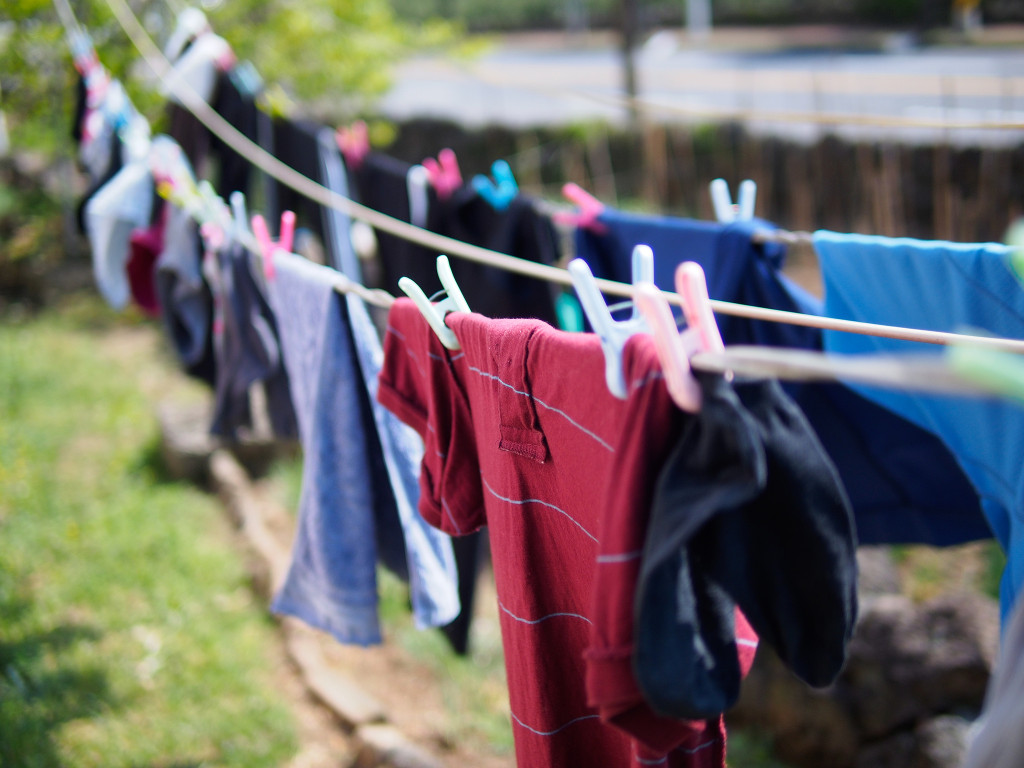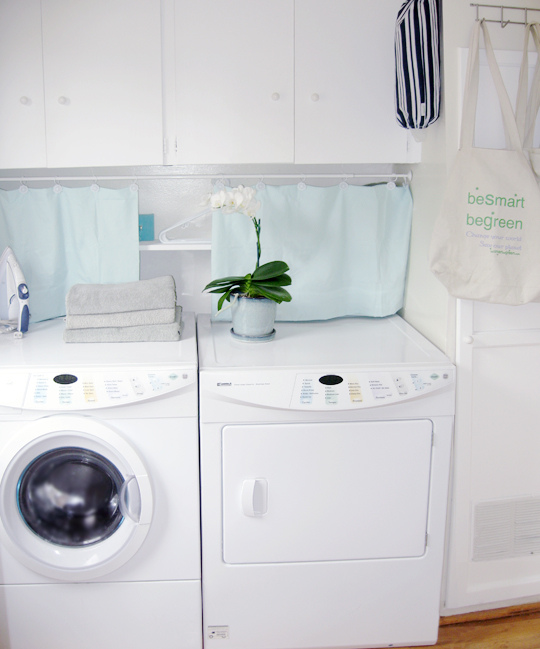In part 1 and part 2 we detoxed the kitchen and bathroom, taking stock of which products to toss, keep, or replace. In this segment we’ll explore the laundry room.
Many of our clothes, if they’re not made from organic cotton or other organic materials like hemp or wool, can already be laced with pesticides and herbicides. What is a consumer to do? Aside from buying clothing made from natural and organic fibers, we can help ourselves by not adding more chemicals to our clothing or the environment in the form of laundry detergents, soaps, dryer sheets, perfumes, and synthetic fragrances.
Many conventional laundry products contain carcinogens and irritants like chlorine, ethyl acetate, petroleum distillates, nonylphenol ethoxylate, diethanolamine, and perc, a dry cleaning chemical. Many of the chemicals in laundry care products haven't been thoroughly tested, and manufacturers are not required to label all of the ingredients in a particular product. This alone is enough of a red flag to warrant making the switch to green, plant-based laundry products.
And that fresh-laundry smell wafting outside? Not so good either. Researchers have found that dryer vents can emit many chemicals and air pollutants when standard scented laundry detergents and dryer sheets are in use. These products are often full of synthetic fragrances that are actually a combination of potent and harmful chemicals.
Luckily, there are more natural plant-based laundry products now that are safe for you and for the environment. If you feel up for making your own, below you'll also find two easy, natural DIY recipes.
Detox question: What laundry care products do you currently use? Do they contain synthetic fragrance?
During our household detox, I found that switching to green laundry products was easier than I thought. Many stores like Target now carry green laundry options that are safe for us and for the environment. We even found natural dryer sheets that we add essential oils to. They smell much better and are free from the harmful chemical compounds mentioned above. After removing perfumey laundry products from our lives, I have actually developed a sensitivity to them. Quite a feat for someone who used to love the “clean laundry” scent! 
Detox question: Where I live, is it possible to hang my laundry out to dry?
Another way to save energy and cultivate more well-being is to get outdoors and hang your laundry on the line to dry. Nothing feels better than crawling into a bed made with fresh sheets that have spent the day absorbing the sun!
Detox question: How will you dispose of the products you no longer need?
Use caution when disposing of household products that contain harmful chemicals. If a product says flammable, toxic, corrosive, or poisonous, it should not be thrown in the trash or be put down the drain. Many cities and towns have resources to help you dispose of unwanted toxic products safely. Just Google hazardous waste collection sites or pollution prevention programs in your area.
Make Your Own Laundry Soap
You will need:
1 bar of soap (Dr. Bronner’s is good)
2 quarts water
Cheese grater
1 cooking pot
1 five-gallon bucket
4.5 gallons of hot water
1 cup washing soda
1 cup Borax
Grate the soap and put it into the cooking pot with 2 quarts of water. Heat and stir until soap is dissolved.
Put 4.5 gallons of hot water into the 5-gallon bucket. Add 1 cup of Borax and 1 cup of washing soda. Stir until dissolved. Add soap mixture and stir. Let sit for several hours, then mix until smooth and pour into desired containers. Use ½ cup to 1 cup of detergent per load of laundry.
Make Your Own Dryer Sheets
You will need:
Several squares of flannel (available for purchase, or you can use an old sheet or shirt lying around)
Water
Essential oils such as lavender or tea tree
Dampen a square or two of flannel with water and add a few drops of essential oils. Add to dryer before drying clothes.
Laundry room photo by Maegan Tintari, drying laundry photo by Kim MyoungSung, both on Flickr (CC BY 2.0)






